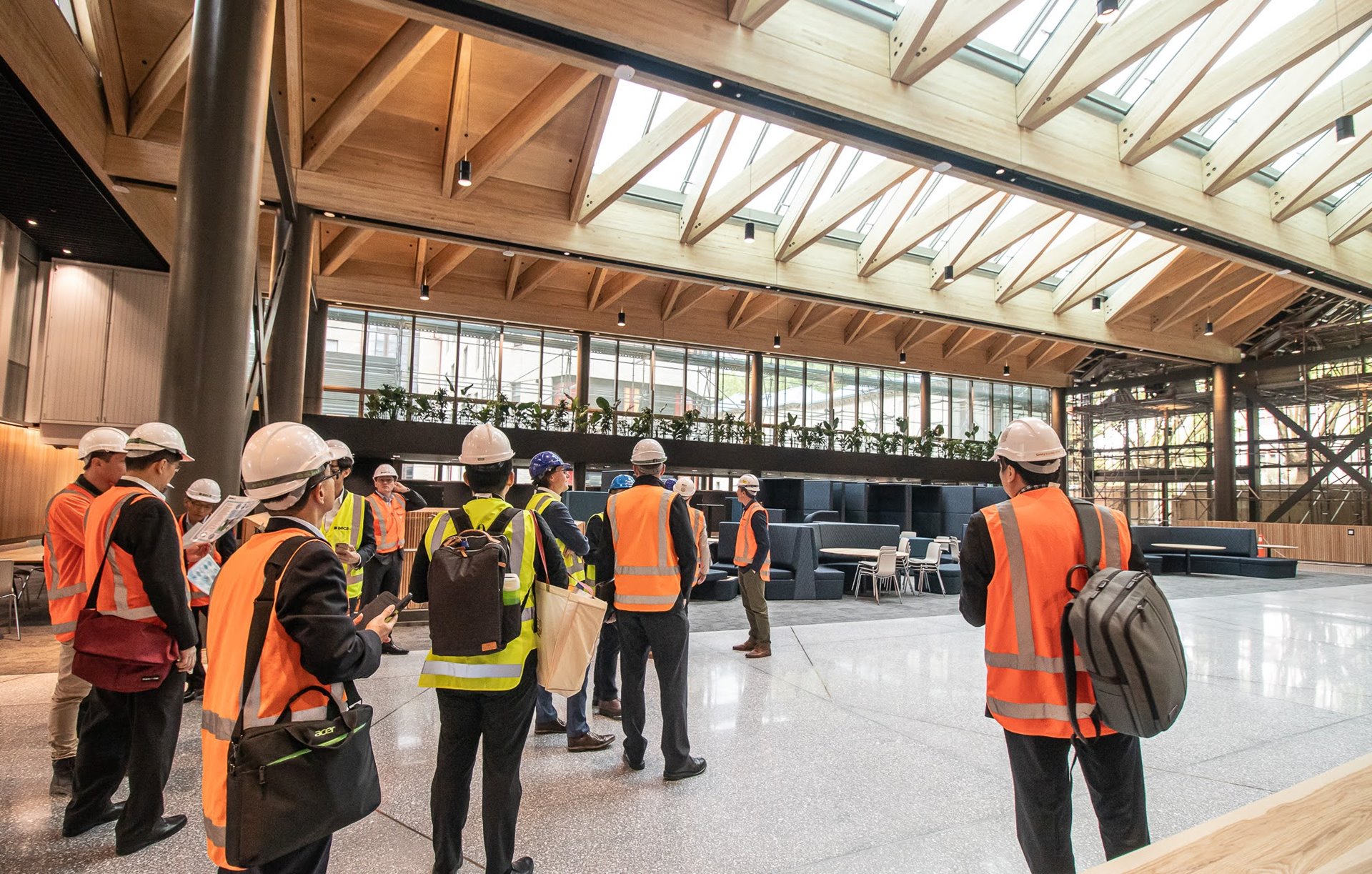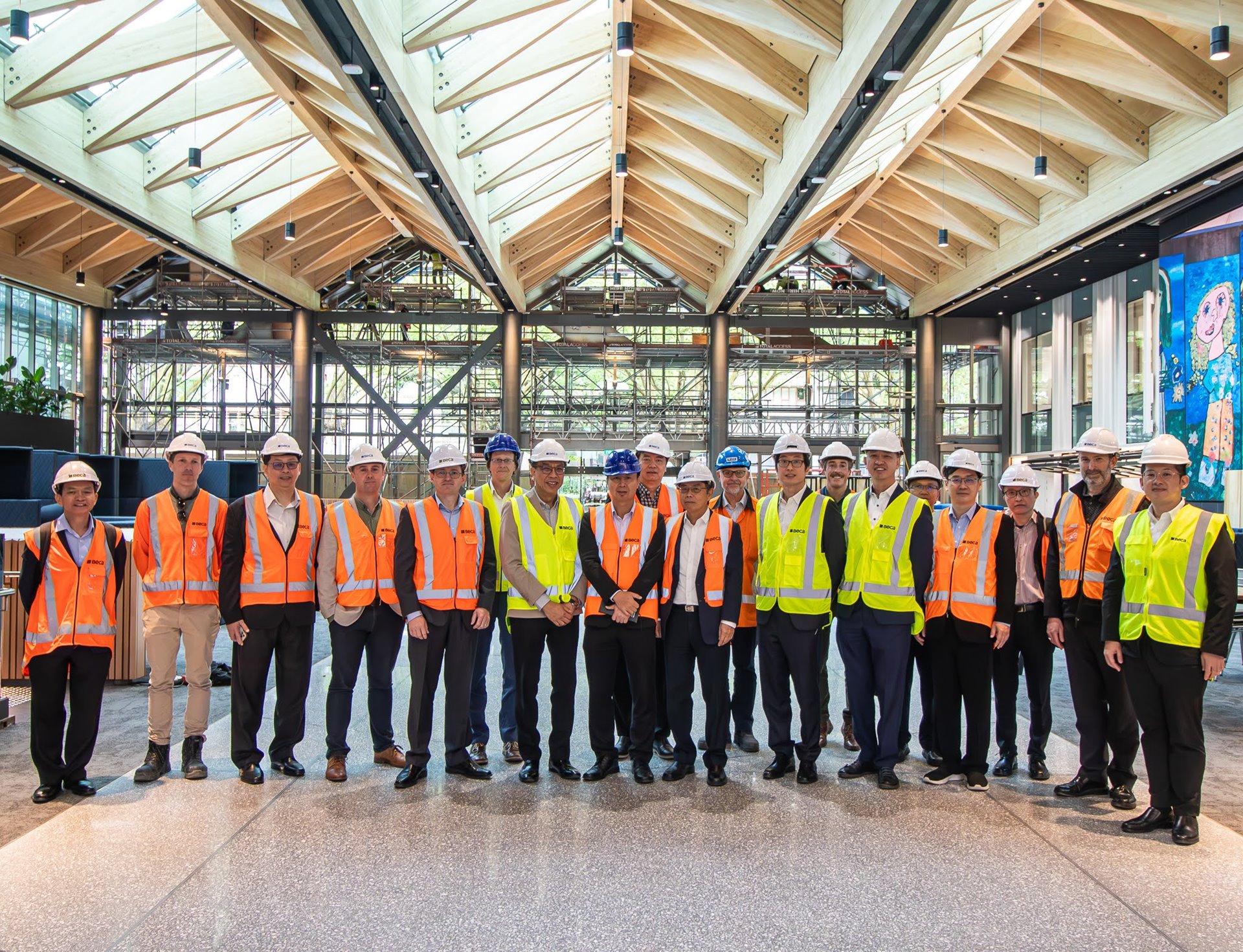Beca recently had the privilege of hosting delegates from Singapore’s Ministry of Health and Ministry of Health Holdings, their Healthcare Infrastructure Projects Division and Health Services, on a New Zealand study tour. The primary focus of their visit centred on exploring pathways for the decarbonisation of healthcare-related emissions.
Underlining the importance of the conversation, decarbonisation and health are both on the agenda at COP28 later this month – with conference organisers aiming to build consensus on priority actions for the global health system's response to climate change, paired with financing commitments for implementation.
With both Singapore and New Zealand striving towards achieving Net Zero Carbon by 2050, there are many valuable insights to be shared and learned from each other. In this article, our sustainability team share some of their key insights following the delegation’s visit, as we work together in pursuit of a zero-carbon future.
The journey to net zero
In response to the Climate Change Response (Zero Carbon Act), New Zealand’s Carbon Neutral Government Programme aims to accelerate the reduction of emissions within the public sector. Its goal is to ensure that a number of public sector organisations reach carbon neutrality from 2025, and achieve net-zero greenhouse gas emissions by 2050.
New Zealand’s Carbon Neutral Government Programme has parallels to Singapore’s Green Plan and Green Government initiatives. The Singaporean government has raised its national climate target to achieve “net zero emissions by 2050” as part of their long-term Low-Emissions Development Strategy (LEDS). In an effort to lead the way for Singapore’s decarbonisation journey, the public sector has committed to achieve net zero emissions by 2045.
Emissions in healthcare
When it comes to emissions generated by public sectors in New Zealand, the healthcare sector is the largest contributor to energy-related emissions. Operational emissions stemming from the consumption of gas, electricity and coal in healthcare account for over 40% of these emissions, whereas education, defence, corrections, and central government sectors each contribute a more modest 10% to 15%.
Through our work developing greenhouse gas inventories in healthcare, our research found that energy-related emissions constitute just a fraction of the overall healthcare footprint, representing as little as ~10% of healthcare’s total emissions.
Additional contributors include patient travel and staff commuting, adding nearly 20%; business travel, anaesthetic gases, water and wastewater adding >5% collectively. However, the lion’s share at 65% of total emissions arises from medicines, medical equipment and other purchased goods and services that support the day-to-day operations of healthcare facilities – presenting a significant opportunity to curb emissions in the supply chain.
Strategies for decarbonisation in healthcare
An important part of both countries’ journeys to Net Zero is using decarbonisation roadmaps for existing facilities and infrastructure as a tool to identify potential long-term carbon reduction projects. Initiatives might include energy efficiencies gained through building optimisation and tuning, building fabric upgrades, LED lighting, heat recovery and fuel switching from gas to electricity. Our work in this space has shown healthcare and most buildings in New Zealand can achieve a 75% reduction in energy-related emissions with the remaining 25% achieved through the decarbonisation of New Zealand’s National Grid.
Compared to New Zealand, Singapore faces unique challenges due to its limited access to renewable energy resources and its tropical climate. Consequently, Singapore must place a heightened emphasis on attaining exceptionally high levels of energy efficiency within its facilities in order to attain a Net Zero energy goal. In comparison New Zealand lags behind Singapore in actual in-use operational energy performance for healthcare, with Singapore mandating Greenmark Platinum status, which measures actual in-use performance.
Emissions reduction through preventive measures
To effectively address healthcare’s predominant share of emissions, decarbonisation efforts need to prioritise health and wellbeing, along with primary preventions, to minimise the need for people to visit a healthcare facility. Initiatives to keep people happy and healthy include food and nutritional education, sports and exercise, as well as warm and comfortable homes.
Reducing the demand for healthcare services can set in motion a desirable feedback loop that includes a reduced need for clinical space, decreased site construction, less travel to healthcare facilities, and lower consumption of clinical goods and services. This, in turn, results in lower emissions, improved air quality, and (as an example) fewer asthmatic episodes and subsequently decreased use of high-emission metered dose inhalers. This scenario of stepping down demand for healthcare services and emissions would be applicable in healthcare economies worldwide.
Minimising upfront and embodied carbon emissions
Even with preventive measures for emissions reduction in place, demand for healthcare facilities is forecast to continue rising due to growing and aging populations. It is therefore imperative to consider both upfront and embodied carbon emissions in major capital projects. Especially given the targeted decarbonisation of grid-supplied electricity meaning these emissions will proportionally be higher over time.
Upfront carbon emissions are generated by procurement and manufacturing of the products and materials used in the construction of healthcare facilities – materials like steel, concrete, glass, facade elements, interiors, and various building services. Whereas embodied carbon pertains to the ongoing environmental impact of these facilities throughout their entire lifecycle.
Tools such as Life Cycle Assessments are used to measure and track the upfront, embodied and operational carbon emissions from capital works projects across their estimated economic life of 60 years. These assessments could play a pivotal role in instigating behavioural change with the goal of mitigating the environmental footprint of products and materials.
Both New Zealand and Singapore have been actively engaged in identifying commercially and technically feasible carbon reduction initiatives in the construction process – with a focus on the decarbonisation of the structural frame and foundations by sourcing recycled steel from electric arc furnaces, low carbon cement and adopting a mass timber structure approach where appropriate.
However, both delegations agree there is still a significant lack of information in the form of Environmental Product Declarations available, which hinders the sector’s ability to identify effective low-carbon alternatives. This is especially true for building services, which represent as much as 40% of the capital spend in a healthcare project.
Future challenges and opportunities
New Zealand and Singapore have each set ambitious targets for themselves, and are actively exploring solutions to reduce emissions in the healthcare sector.
Looking forward, both countries have an array of challenges and effort ahead of them, to drive the decarbonisation of our construction sectors, reduce energy-related emissions and sustainably reshape the procurement of goods and services.
From decarbonisation roadmaps for existing facilities to preventive measures that serve to enhance health outcomes while reducing demand for healthcare services, there are many opportunities to curb emissions and improve community wellbeing.
By working together and sharing insights, we can accelerate our progress on a journey to a zero-carbon future.
Images from the recent visit



Timothy Howarth
Senior Associate - ESD Engineering
 New Zealand
New Zealand
 Australia
Australia
 Singapore
Singapore